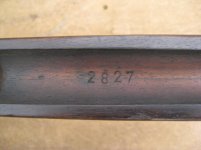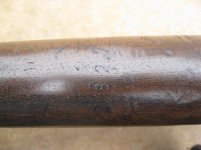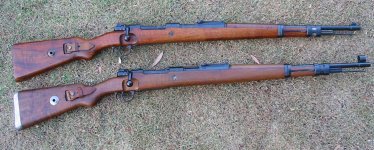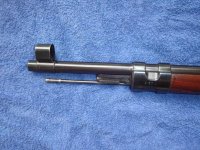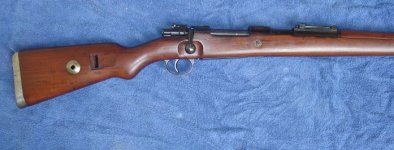stahlhelm1976
Active member
Gents,
Was at the Baltimore show yesterday and picked up this F-block rifle early in the show. The rifle is SN F2827 and it is matching down to the screws. The rifle is eagle-655 proofed in all of the expected places. It shows hard use and wear with most of the blue worn off.
The solid walnut stock is Heer proofed along with two eagle-655 proofs just below the bolt takedown disk. There is no Portuguese crest stamped into the opposite side and it is serial numbered matching externally and in both the hand-guard & stock barrel channels. The rifle is counterbored at the muzzle but other than that is perfect. There are no import marks on this rifle.
I know it is very difficult to ascertain for sure if a rifle was German issued and wanted to share this piece with the forum. It looks heavily worn and just has that look. Any thoughts on whether it was german issue?
Thanks guys...!
Was at the Baltimore show yesterday and picked up this F-block rifle early in the show. The rifle is SN F2827 and it is matching down to the screws. The rifle is eagle-655 proofed in all of the expected places. It shows hard use and wear with most of the blue worn off.
The solid walnut stock is Heer proofed along with two eagle-655 proofs just below the bolt takedown disk. There is no Portuguese crest stamped into the opposite side and it is serial numbered matching externally and in both the hand-guard & stock barrel channels. The rifle is counterbored at the muzzle but other than that is perfect. There are no import marks on this rifle.
I know it is very difficult to ascertain for sure if a rifle was German issued and wanted to share this piece with the forum. It looks heavily worn and just has that look. Any thoughts on whether it was german issue?
Thanks guys...!
Attachments
-
 Side 2 Small.jpg196.2 KB · Views: 68
Side 2 Small.jpg196.2 KB · Views: 68 -
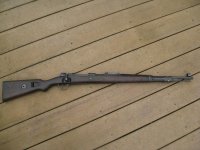 Side Small.jpg195.5 KB · Views: 53
Side Small.jpg195.5 KB · Views: 53 -
 Bolt Small 1.jpg139.2 KB · Views: 55
Bolt Small 1.jpg139.2 KB · Views: 55 -
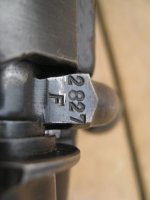 Bolt Root Small.jpg82.7 KB · Views: 50
Bolt Root Small.jpg82.7 KB · Views: 50 -
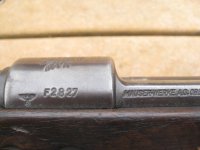 Rail Small.jpg162.4 KB · Views: 54
Rail Small.jpg162.4 KB · Views: 54 -
 Crest Small.jpg156 KB · Views: 69
Crest Small.jpg156 KB · Views: 69 -
 SN Small.jpg186.6 KB · Views: 59
SN Small.jpg186.6 KB · Views: 59 -
 Waffenamps small.jpg205.5 KB · Views: 51
Waffenamps small.jpg205.5 KB · Views: 51 -
 Stock Disc Small.jpg141.3 KB · Views: 70
Stock Disc Small.jpg141.3 KB · Views: 70 -
 Floorplate Small.jpg95.8 KB · Views: 48
Floorplate Small.jpg95.8 KB · Views: 48



